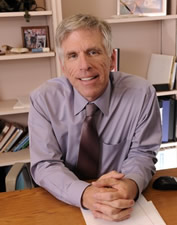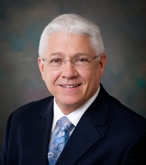A wound patient plan of care is not complete without assessing the need for nutritional support. Wound repair, provided it is not hindered by systemic or local factors that delay healing, takes place pn a continuum-all cellular events in the wound repair process follow a predictable course and order.
During healing, cells proliferate and divide (mitosis) releasing growth factors, new blood vessels are created (angiogenesis and neovascularization), a collagen matrix is formed, and remodeling occurs. In order for these steps to occur, the appropriate substrates and nutrition must be available- e.g., glutamine, an essential amino acid, is required for the inflammatory response.
Factors that Affect Wound Healing
Certain conditions can alter this normal course and impair healing in each of the three phases (inflammatory, proliferative, and remodeling). These include pressure; infection; the presence of necrotic tissue in the wound; edema; patient noncompliance; and lack of glucose control (Figure 1).
Systemic problems also affect healing. A patient may be immunocompromised because of collagen vascular disease, acquired immunodeficiency syndrome, rheumatoid arthritis, diabetes mellitus, or medication that may help a disease process but decrease the body's ability to heal. In addition, inadequate large-vessel profusion and oxygenation to the wound may impede the healing response, making cessation of smoking imperative.
Consideration must be made of the patient's ability to heal as well as the overall goal for that patient. Is this a patient in the terminal stage of illness and/or receiving hospice care? In such cases, aggressive goals for wound care may be unrealistic. Providing conservative, palliative care to ensure the wound does not worsen while keeping the patient pain free may be the wiser course of action.
The Chronic Wound
Clinicians in all healthcare environments often care for chronic wounds. In practice, seeing a patient with diabetes with a wound that has been present for almost a year is not unusual. At the author's facilities, typically, venous ulcer patients present with a history of 15 months, and individuals with decubitus usually present slightly more than six months after the ulcer has developed. Why has the wound become chronic? Why has the rate of wound healing slowed or stopped completely?
Etiology. First, the cause of the wound must be determined. What is the underlying etiology of this wound (e.g., pressure, mechanical forces, sheer, arterial insufficiency, venous insufficiency, neuropathy)? Is this a malignancy? Is this vasculitic? Is the patient malnourished and in a catabolic state? Is this a person with diabetes whose Hg A1c is elevated? Is this a patient with a poor nutritional status?
Debridement. Once adequate circulation and an improved nutritional status are established, many wounds will require debridement to decrease the potential for infection and optimize wound healing. Changing the chronic wound into an acute wound allows growth factors that can enhance healing in an acute wound to take effect; in chronic wounds, proteases can break down those growth factors.3 Debriding slough, necrosis, and devitalized tissue is important. Debridement can be done surgically, mechanically, autolytically, and enzymatically. Careful consideration of the patient and the circumstances is imperative in order to set the appropriate goals for that patient and performing the debridement appropriate to the situation. Aggressive surgical debridement is usually the key when adequate circulation is available.
Nutrition. Chronic wounds that fail to heal are sometimes found in patients with increased protein losses and a depletion of lean body mass or protein-energy malnutrition (PEM). This pathological state results when the intake of energy and protein is inadequate to meet the body's needs. Loss of body weight and subcutaneous fat, muscle wasting, peripheral edema, poor healing of chronic wounds and pressure ulcers, glossitis, hair loss, chronic infections, and fatigue are all results of PEM.
Involuntary weight loss can produce a significant health risk. Specifically, a 5-percent weight loss in 30 days, a 7.5-percent weight loss in 90 days, or greater than 10-percent weight loss in 180 days is considered a significant risk. It has been suggested that 85 percent of nursing home patients and 50 percent of spinal-cord injury patients are at increased risk for PEM.9 Many of these patients develop chronic wounds, in part due to poor nutritional status and their catabolic state.
In the relationship between involuntary weight loss, protein energy malnutrition, morbidity, and mortality, when body weight decreases (percent of ideal weight), it is more difficult for that patient to heal (Figure 2). With starvation, involuntary weight loss is primarily due to the loss of fat; however, in patients who are catabolic, involuntary weight loss is primarily the loss of lean body mass (i.e., loss of muscle and visceral protein). This results in abnormal glucose production, and fat is of loss rises, the likelihood of wound healing further decreases. At less than 20-percent loss, the wound remains a priority. At 20-percent loss, wound and muscle compete for the nutrients. At 30-percent loss, the balance tilts towards using the available protein to rebuild body mass at the expense of wound healing (Figure 3).
Overall, with involuntary weight loss greater than 10 percent of total weight, wound healing is impaired. At greater than 20 to 30 percent, wound healing ceases, and new wounds have the potential to develop.
Restoring Nutrition
. . .Continue to read rest of article (PDF).










